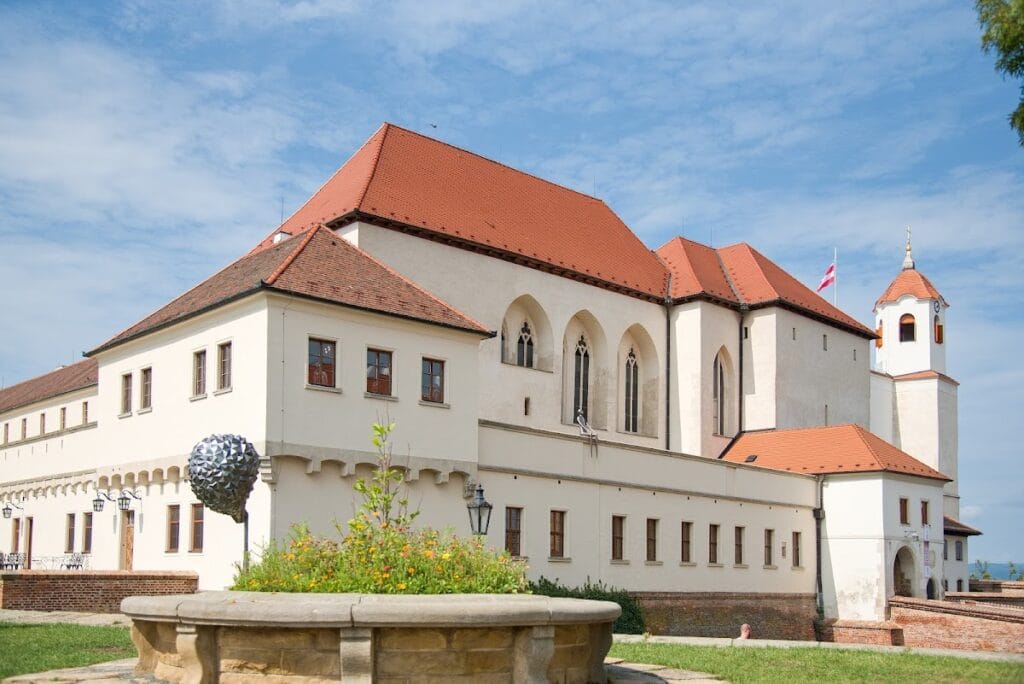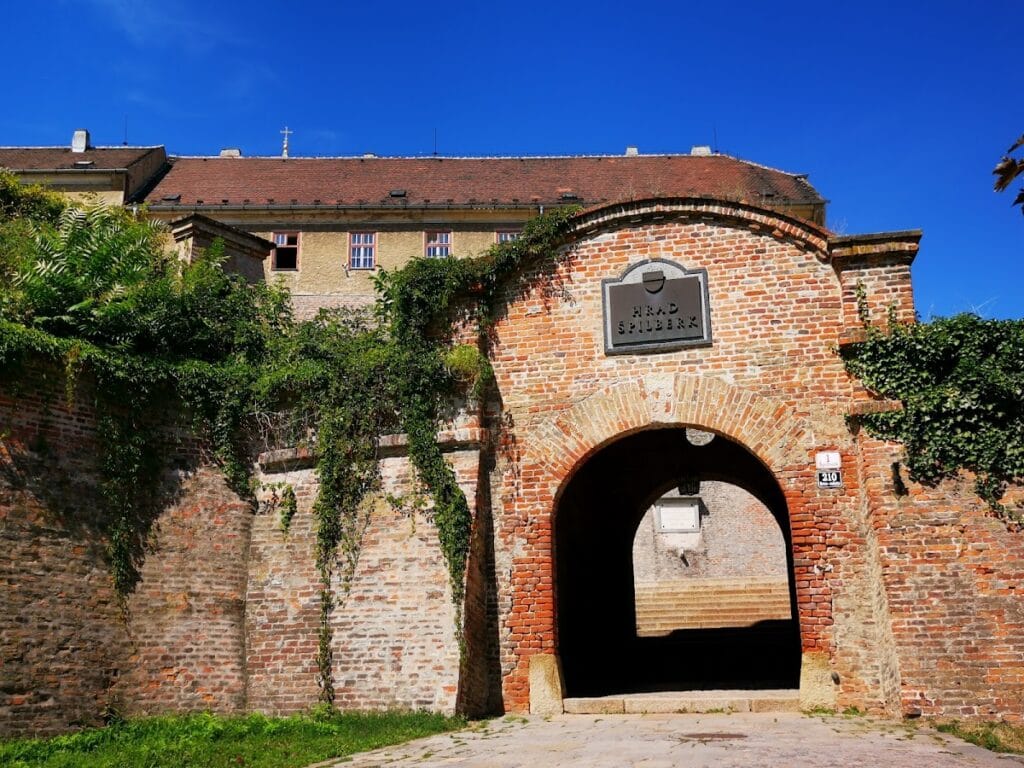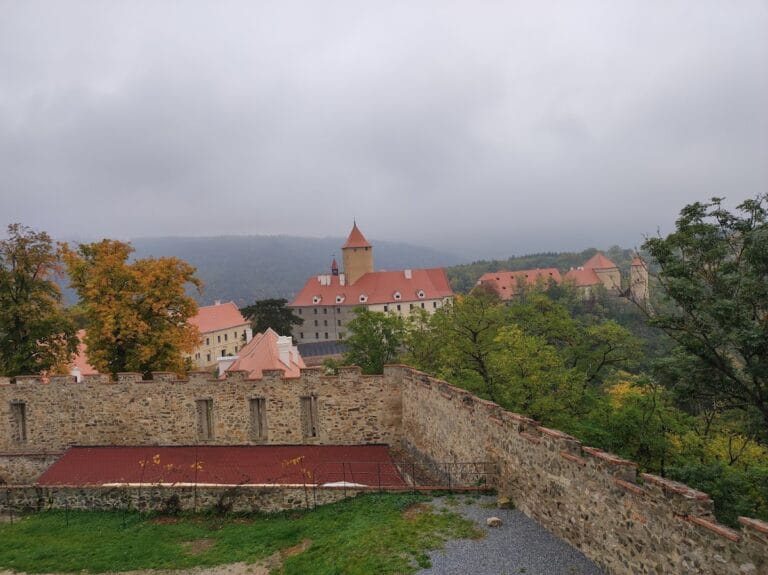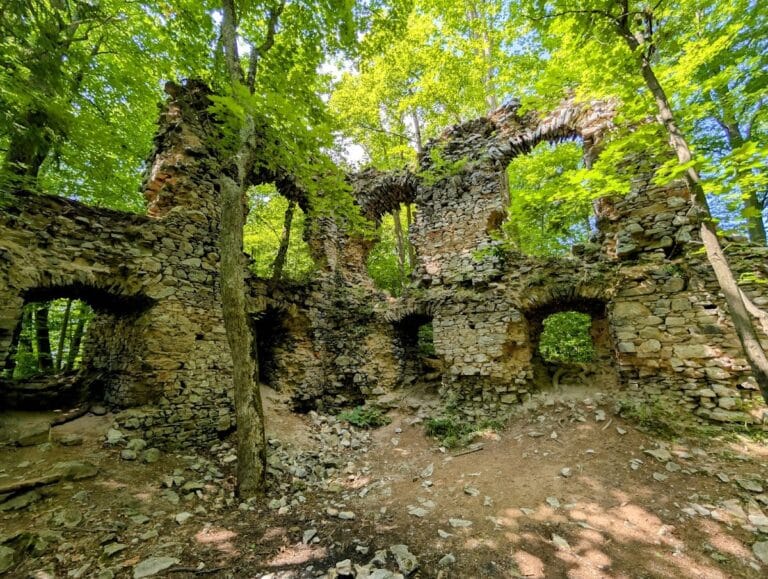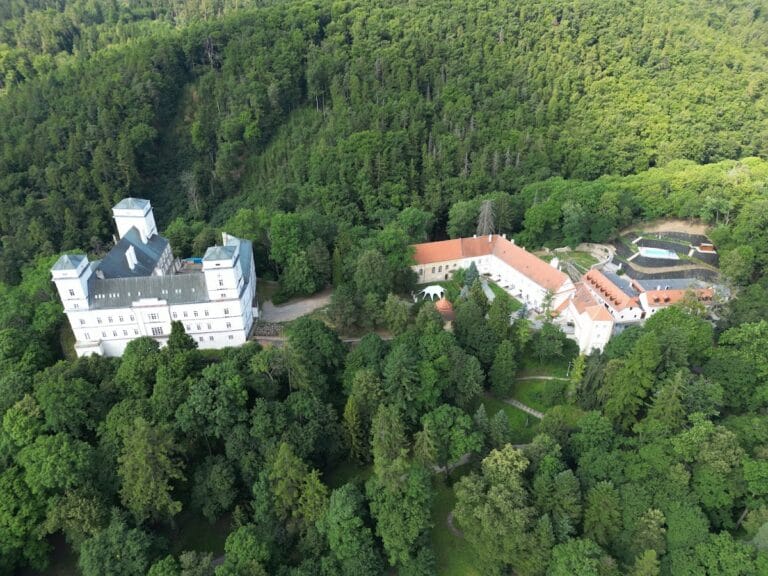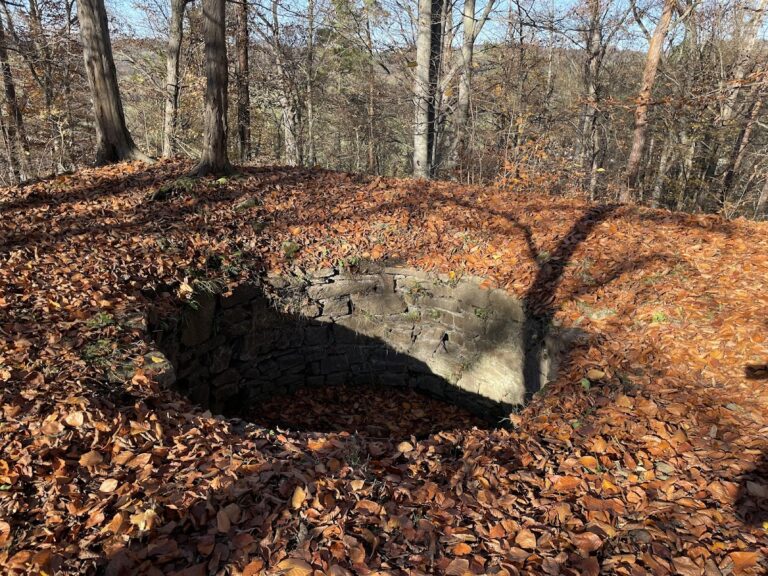Špilberk Castle: A Historic Fortress and Museum in Brno
Visitor Information
Google Rating: 4.7
Popularity: High
Google Maps: View on Google Maps
Official Website: www.muzeumbrna.cz
Country: Czechia
Civilization: Medieval European
Remains: Military
History
Špilberk Castle is located in the city of Brno, in the modern Czech Republic. It was originally built by the Moravian margrave Přemysl Otakar II in the mid-13th century as a royal castle and administrative center for the rulers of Moravia. The earliest surviving written records mention the castle between 1277 and 1279.
In the 14th century, Špilberk served as the permanent residence of Moravian rulers Jan Jindřich and later his son Jošt Moravský. Between 1350 and 1411, under their occupancy, the castle became a seat of regional power. Notably, in 1410, Jošt briefly elevated Špilberk to serve as a seat of the Holy Roman Emperor. Following Jošt’s death in 1411, the castle gradually lost its status as a royal residence.
During the turbulent Hussite Wars of the 15th century, Špilberk shifted from a princely home to a primarily military stronghold. The castle endured a significant siege and was occupied by the Hungarian king Matthias Corvinus in 1469. Over the following decades into the 16th century, ownership changed hands multiple times. After several transactions, the Moravian estates purchased the castle in 1560 and soon afterward sold it to the city of Brno. This situation remained until Emperor Ferdinand II confiscated Špilberk in 1620, following the decisive Battle of White Mountain.
During the Thirty Years’ War, Špilberk played a critical role in defending Brno, successfully withstanding several Swedish sieges between 1643 and 1645. The fortress was extensively expanded throughout the 17th and into the mid-18th century, transformed into a Baroque fortification featuring bastions and moats integrated with the urban defenses of Brno. Its last major military action came during the War of Austrian Succession in 1742, when it resisted a siege by Saxon and Prussian forces.
By the late 17th century, Špilberk began to serve as a prison. Emperor Joseph II converted it in 1783 into a civil prison housing the most dangerous criminals, with 29 individual wooden cells designed for life-term inmates. Over the years, the prison was known for holding political prisoners including the French revolutionary Jean-Baptiste Drouet, Hungarian revolutionary Jakobin Ferenc Kazinczy, and Italian patriot Silvio Pellico. The prison operated until 1855, when Emperor Franz Joseph I ordered its closure. Subsequently, the fortress was repurposed as military barracks and remained in this role until 1959.
During World War II, the German Wehrmacht modified the fortress for their own use. It became a prison for Czech patriots, many of whom perished in captivity within its walls. After the war, Špilberk ceased to function as a military installation and, starting in 1960, was transformed into a city museum and cultural venue.
Remains
Špilberk Castle’s structure combines elements from medieval Gothic origins with Baroque military architecture. The original 13th to 15th-century Gothic castle remains mostly in the eastern wing. This part retains its Gothic character, though its current appearance results from restorations carried out between 1995 and 2000, which have engendered some scholarly debate.
The 17th and 18th centuries saw Špilberk expanded into a Baroque fortress, featuring large bastions, brick-lined moats, and integrated casemates. These casemates were two-story vaulted chambers serving as military shelters capable of housing 1,200 soldiers. The brick moats, constructed around 1742, formed a defensive barrier surrounding the fortress’s outer walls. Along these walls, single-story barracks were built during this period, offering accommodation for troops within the fortified perimeter.
A significant adaptation took place in the casemates during the late 18th century when parts of the upper northern casemates were converted into a prison in 1783. The following year, the lower casemates were modified to hold life-sentenced prisoners in 29 individual cells made of wood planks, where inmates were restrained by shackles. Additionally, the upper floor of the southern casemates became known as Leopold’s wing, converted into a prison facility used until the early 19th century.
Within the western courtyard lies a medieval well, originally about 39 meters deep, which was deepened between 1716 and 1717 to reach 112 meters. This well, about 3.5 meters in diameter and capable of holding over 1,000 cubic meters of water, includes two horizontal tunnels at its base. In 1809, Napoleon’s troops filled the well, but it was later cleared and studied in 1990–1991. Archaeological investigation revealed various artifacts, including the skeleton of a 19th-century soldier. Adjacent to the well stands a Baroque cistern designed to collect rainwater from the roofs nearby.
The majority of buildings seen today, including the southern, western, and northern wings as well as the central block that divides the former large courtyard into two sections, date to the 1830s. These structures were created during the transformation of Špilberk from a prison into military barracks, a process which heavily altered and in some cases destroyed medieval elements, leaving the eastern wing as the main medieval survivor.
During the German occupation between 1939 and 1941, Špilberk’s interior spaces were unified architecturally, with new historicizing decorative details added while the external appearance largely remained unchanged. Since 1990, a set of fifteen bells ranging from 16 to 220 kilograms in weight has been installed as a carillon on the rear wall of the castle courtyard.
Perched atop a hill 282 meters above sea level, the fortress dominates the surrounding cityscape of Brno, offering prominent panoramic views that underscore its longstanding strategic importance.
